
Lance had no desire to climb down through the poison ivy, so he relaxed up on the bridge. To the best of my knowledge I'm still immune to the stuff, but everyone tells me I'll get it eventually.
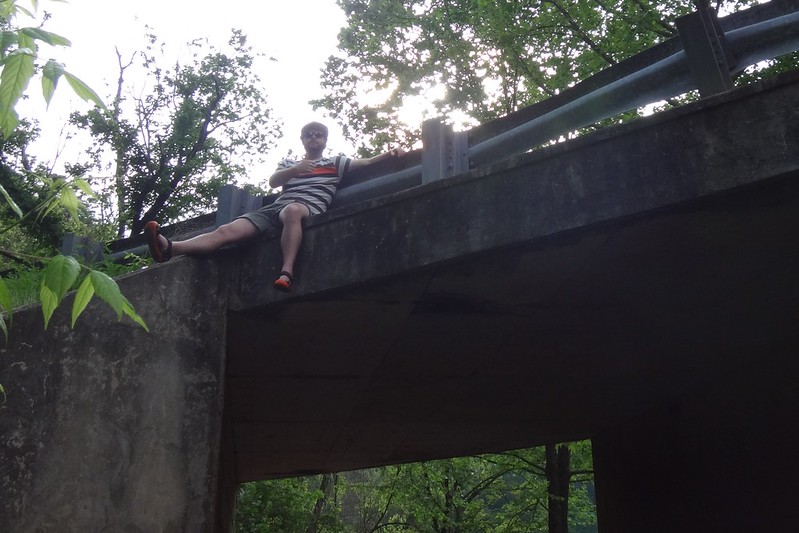
After some difficulty finding a worm to use as bait, I was able to catch my target here, a male cherry darter! The sun hadn't yet risen over the trees, so I had to take the photo in fairly low light.
Cherry Darter (Etheostoma etnieri) - new hook & line species #440
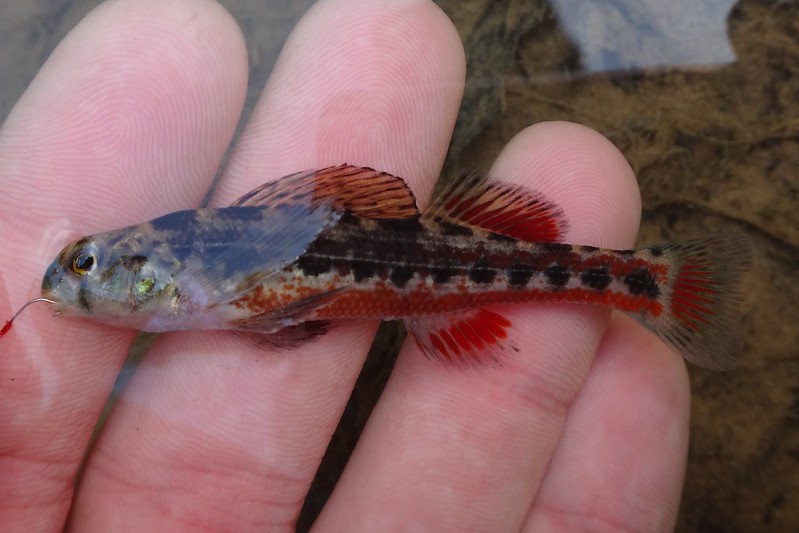
My only other catch from this spot was a juvenile striped shiner.
Striped Shiner (Luxilus chrysocephalus)
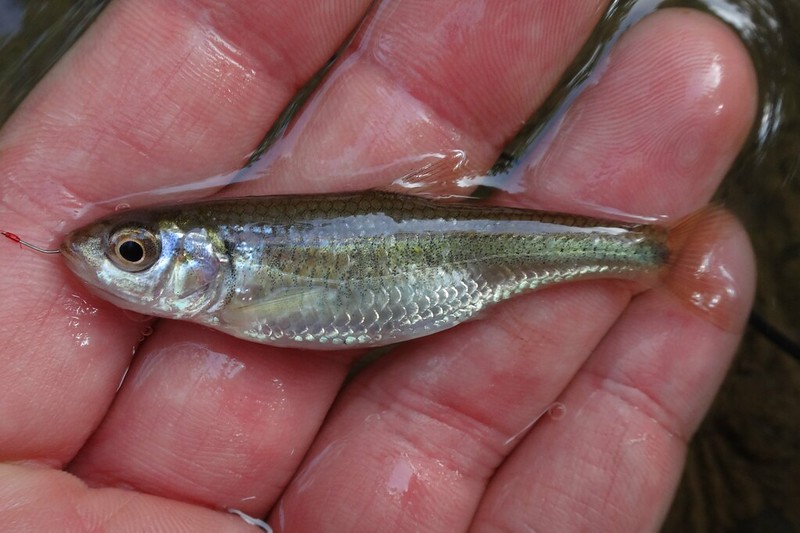
Next we went to a public boat launch on the Barren Fork. I found darters in the pools next to one of the bridge pilings. Most of them were interested in mating, so I had to search for ones by themselves who would take an interest in my bait.
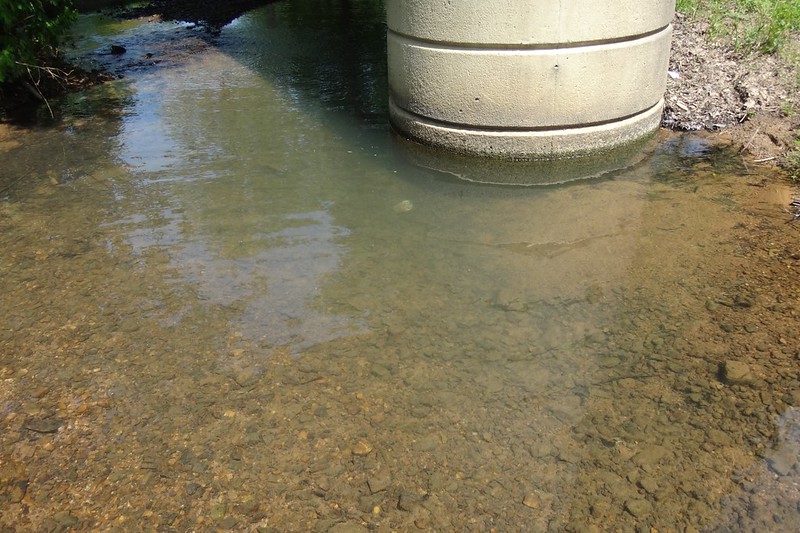
My first catch was a small fringed darter. At least, I'm 99% sure it's a fringed darter. The other possibility is the barrens darter, but from what I read they only inhabit the furthest upper reaches of the tributaries in this area. Barrens darters are able to out-compete fringed darters once the stream depth is below a few inches.
Fringed Darter (Etheostoma crossopterum)
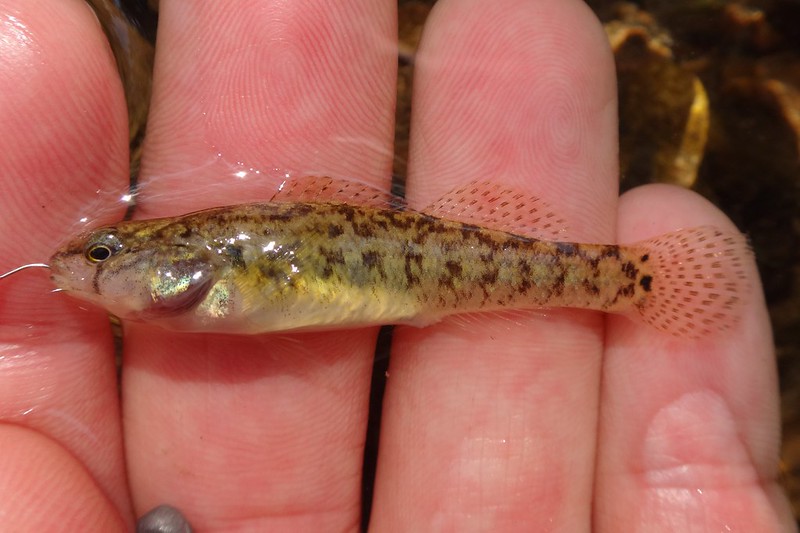
There were plenty of cherry darters at this spot. I used tiny earthworms that we dug up locally, and they worked much better than store bought redworms.
Cherry Darter (Etheostoma etnieri)
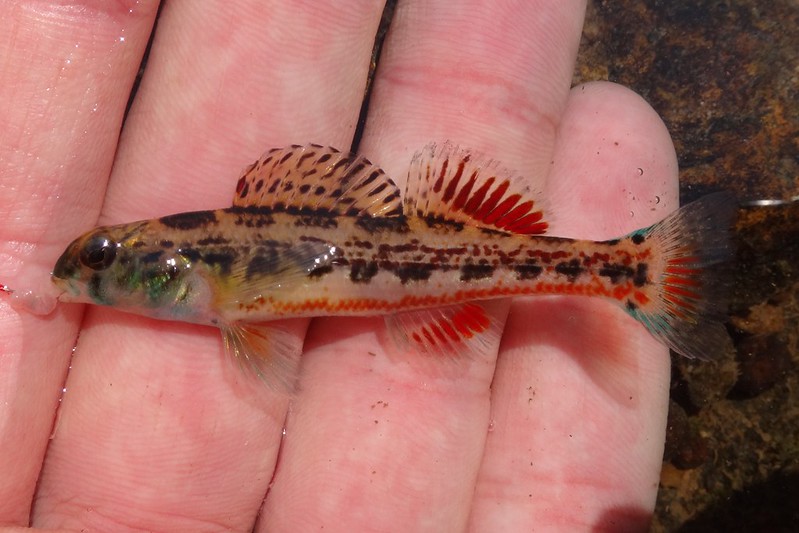
Further to the south we crossed into the Duck drainage, which is one of the most biodiverse rivers in the country. Lance wanted to get a photo of a colored up flame chub, so that was our priority. The good news is that it didn't take long to find a few flame chubs, but the bad news is that none of them were colored up. It was probably too late in the year.
Flame Chub (Hemitremia flammea) - new hook & line species #441
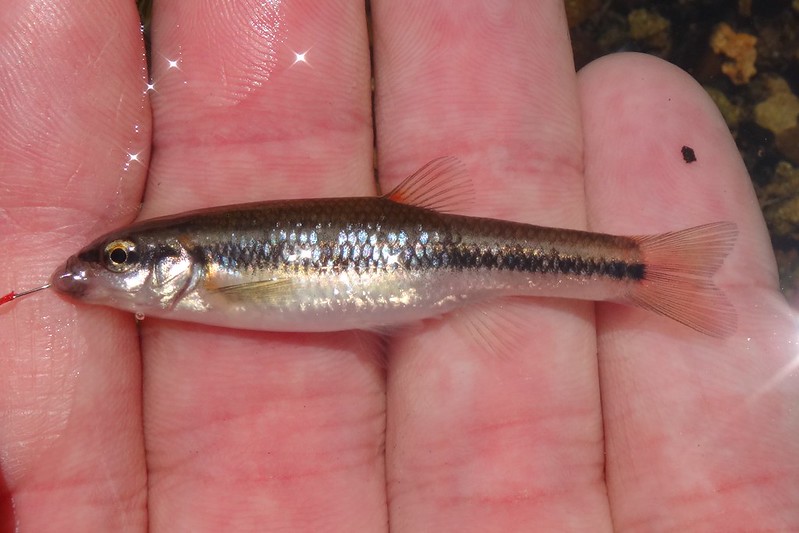
There were plenty of other fish at this spot. The rosyside dace were looking good. We also saw some large creek chubsuckers, but didn't stay long enough to try to catch them.
Rosyside Dace (Clinostomus funduloides)
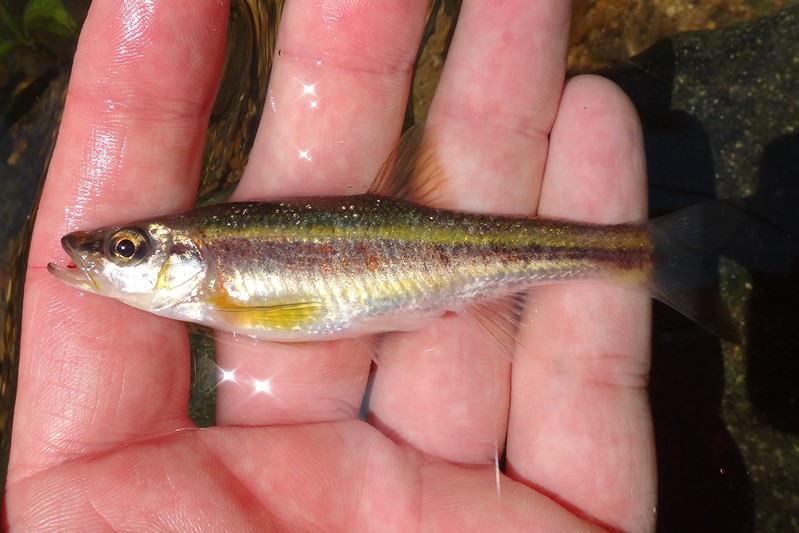
The only darter I caught at this spot was a saffron. It had a little more color than the one I caught a few years ago.
Saffron Darter (Etheostoma flavum)
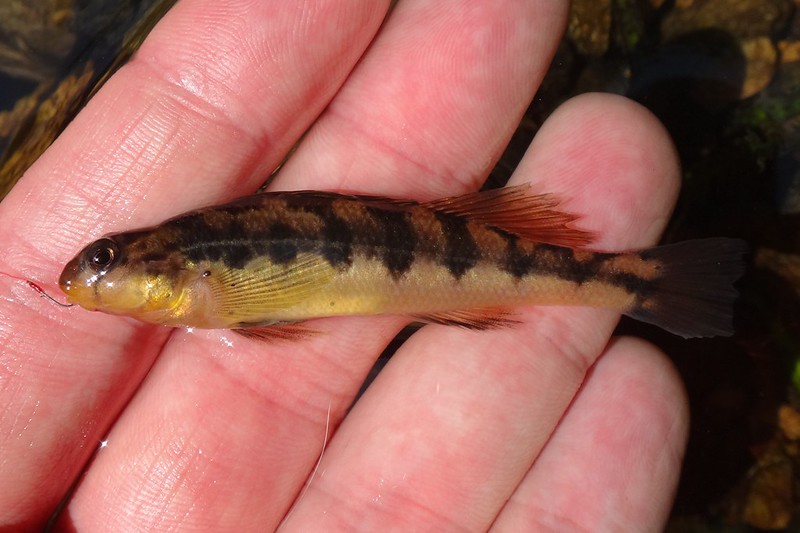
Our last fishing spot was just upstream of Rutledge Falls, also in the Duck drainage. Before fishing we walked down to the waterfall to take a look. We don't have these in Illinois!
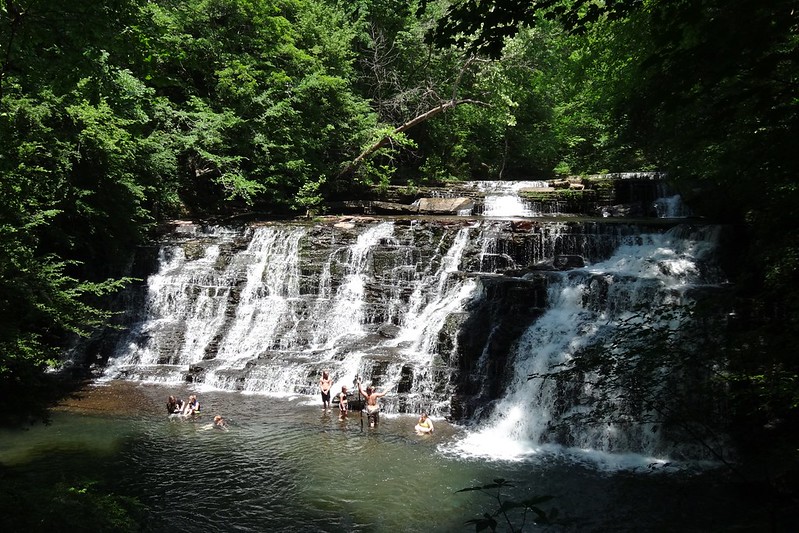
Once again we were looking for colorful flame chubs, but we were not successful. However, I did catch several darters that have been a giant pain to identify. The possibilities are black darter or Duck darter, but neither of the two males below seem to fit those species. For now I'm going to call all three black darters and add +1 to my lifelist.
Black Darter (Etheostoma duryi) - new hook & line species #442
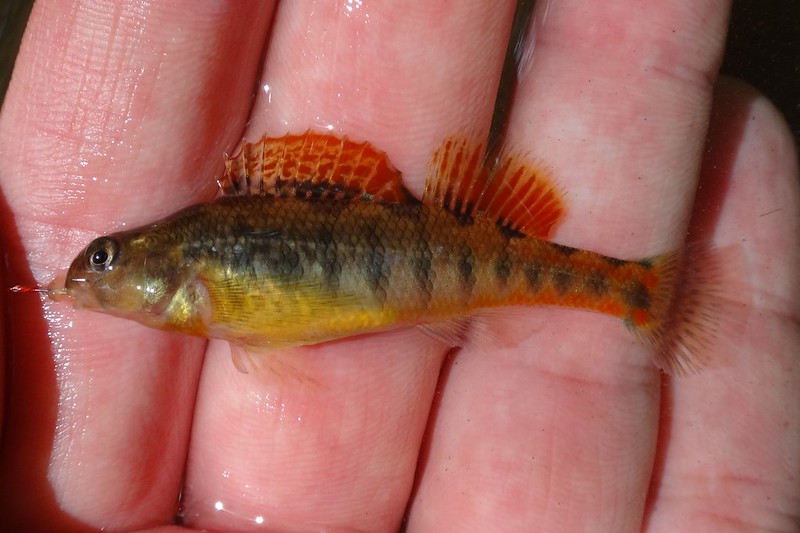
Black Darter (Etheostoma duryi)
Black Darter (Etheostoma duryi)
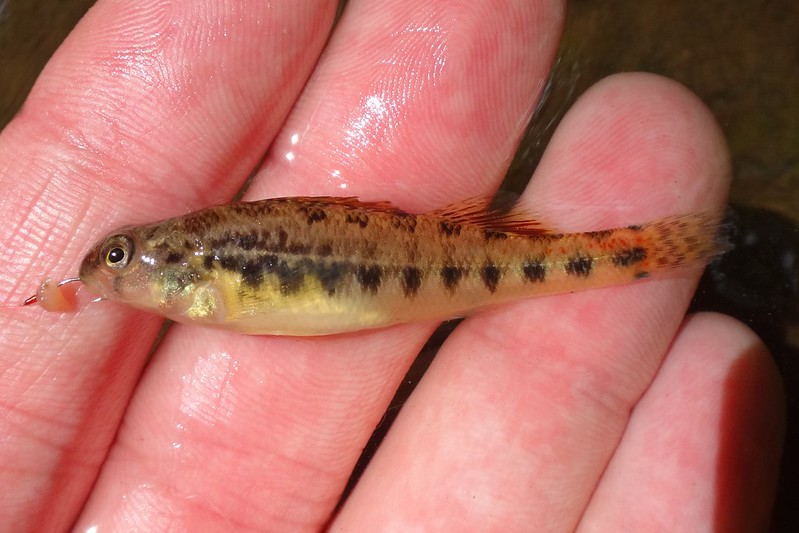
The rosyside dace were looking good at this spot as well. They had incredibly large mouths and had more pigment on their scales than the ones from the previous spot.
Rosyside Dace (Clinostomus funduloides)
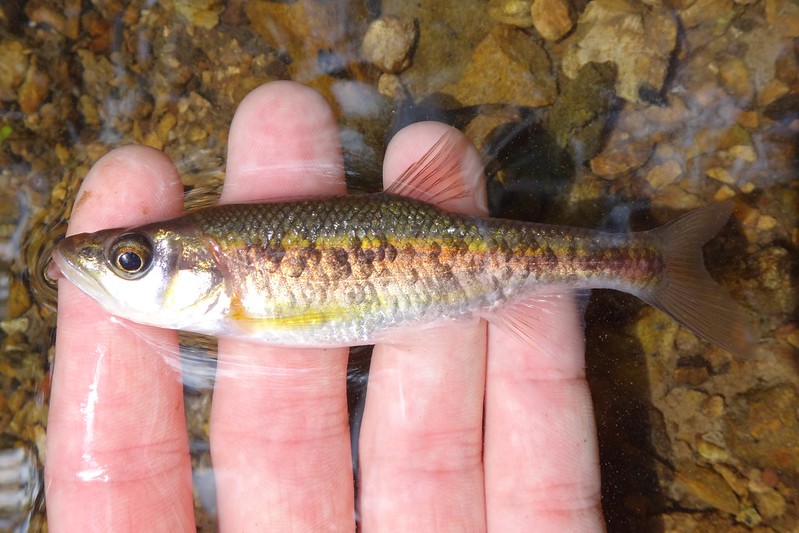
At this point we were anxiously watching the weather forecast because a line of thunderstorms was approaching from the west. We decided to cut our trip short because the streams were likely to be blown out if it rained hard. It wouldn't arrive for an hour though, so we drove a few minutes to a park to see another waterfall.
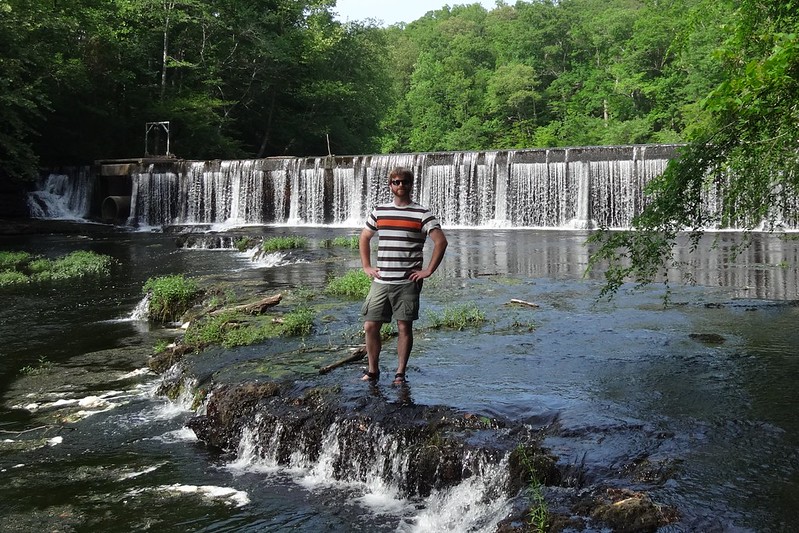
Lance is a big fan of aquatic plants, so he thoroughly enjoyed this spot.
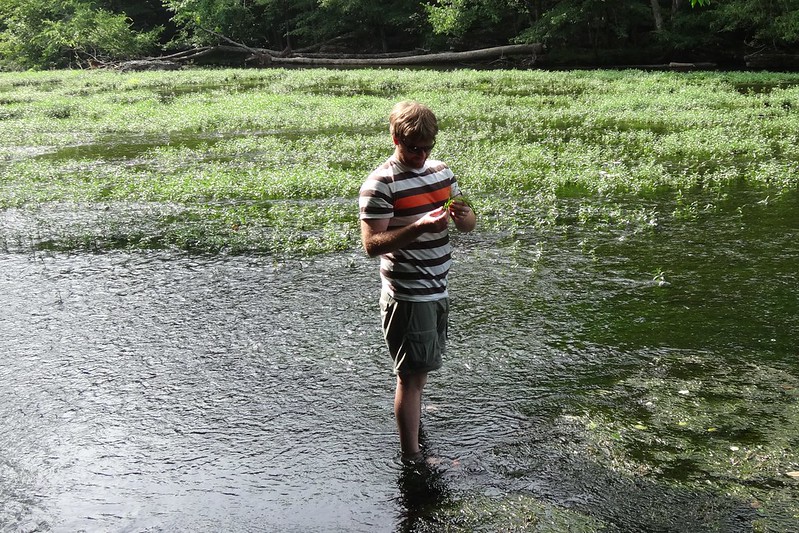
The first set of falls was man-made, but further downstream we found some natural falls. It was a nice end to the trip.
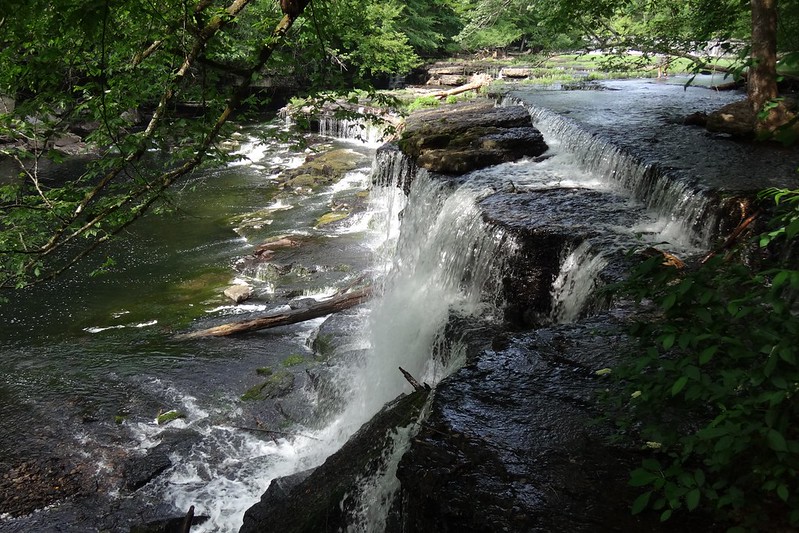
Thank you Lance to a great road trip! It was a bummer that we didn't catch a blackfin sucker or a colorful flame chub, but we saw tons of fish and enjoyed some great scenery. If anyone has ideas about those last three darters, please send me a message!
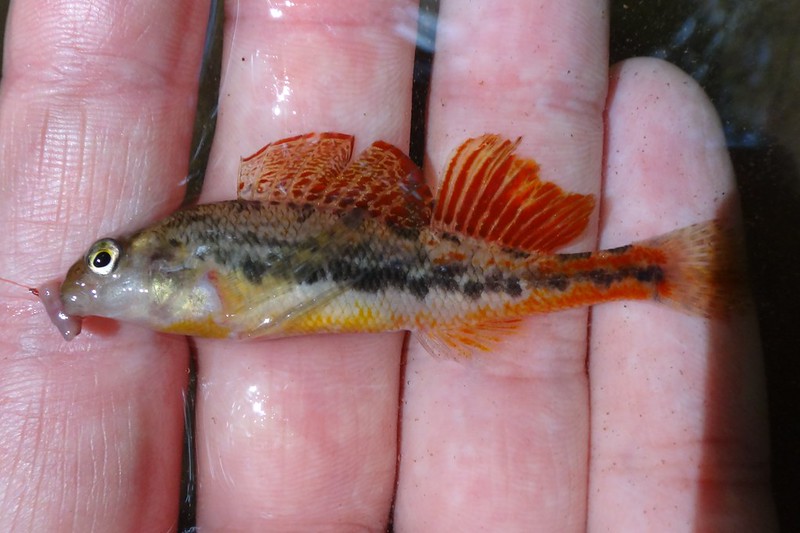
No comments:
Post a Comment
Note: Only a member of this blog may post a comment.